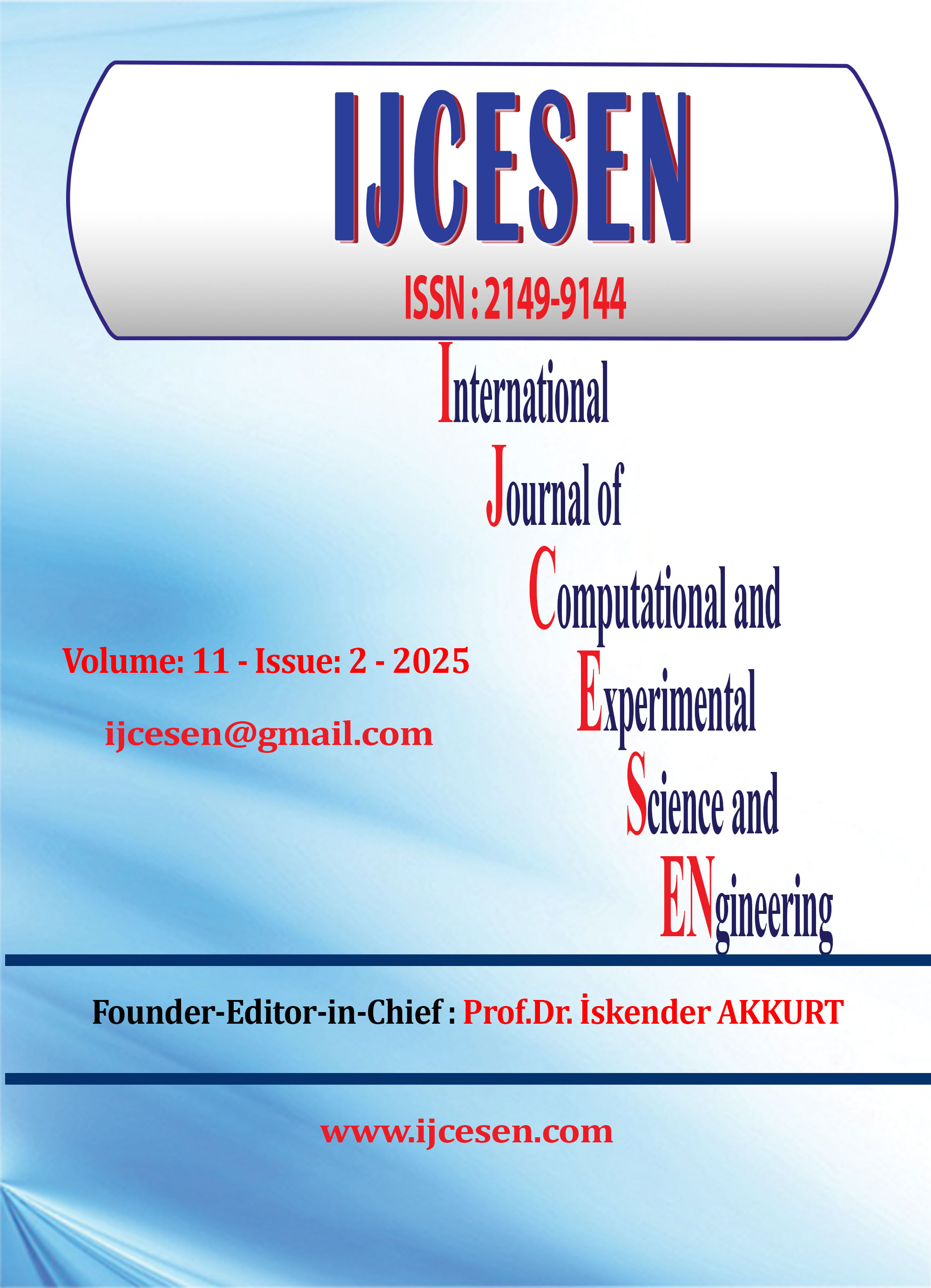Deep Learning Based Automated Detection of Arcus Senilis and Its Clinical Risks in Ocular Health
DOI:
https://doi.org/10.22399/ijcesen.1565Keywords:
Deep Learning, Automated Detection, Ocular HealthAbstract
Arcus Senilis is a clinical indicator of lipid deposition in the cornea, commonly observed in aging individuals. This study aims to develop an automated deep learning-based pipeline for detecting Arcus Senilis and estimating cholesterol levels from ocular images. We implemented an image-based classification system using EfficientNetB0, a state-of-the-art convolutional neural network (CNN). The dataset was pre-processed using Contrast Limited Adaptive Histogram Equalization (CLAHE) to enhance contrast. The model was trained using transfer learning, incorporating global average pooling and fully connected layers to classify Arcus Senilis presence and estimate cholesterol levels. Additionally, patient metadata, including age and lipid levels, was integrated to enhance prediction accuracy. The model was trained on a labelled dataset, with a multi-task learning approach handling both classification (Arcus Senilis detection) and regression (cholesterol level estimation). Performance was evaluated using Mean Absolute Error (MAE), R² Score, Accuracy, and Confusion Matrices. The proposed model achieved an accuracy of 92.5% for Arcus Senilis detection and a Mean Absolute Error (MAE) of 8.4 mg/dL for cholesterol level estimation. The system effectively distinguished Arcus Senilis from normal eyes and provided clinically relevant cholesterol estimations. Evaluation metrics, including precision, recall, and F1-score, demonstrated its reliability compared to traditional machine learning approaches such as SVM + HOG Features, ResNet50, and VGG16. The proposed deep learning pipeline provides a non-invasive, accurate, and automated solution for Arcus Senilis detection and cholesterol level estimation. The findings suggest potential applications in ophthalmic diagnostics and lipid metabolism assessment.
References
Amini, A., & Rabbani, H. (2023). A Deep Learning Approach to Automatic Recognition of Arcus Senilis. Journal of Medical Imaging and Health Informatics, 13(1), 123-130.
Kocejko, T., & Ramlee, R. A. (2023). Using Convolutional Neural Networks for Corneal Arcus Detection Towards Familial Hypercholesterolemia Screening. Journal of King Saud University Computer and Information Sciences, 35(2), 150-158.
Kumar, S., & Gupta, D. (2023). Advanced Skin Lesion Detection via EfficientNetB0 and Vision Transformers. Multimedia Tools and Applications, 82(4), 5678-5690
Li, X., & Zhang, Y. (2024). Efficient Segmentation of Active and Inactive Plaques in FLAIR MRI Using Deep Learning. Scientific Reports, 14(1), 1234
Chen, Y., & Wang, J. (2023). Saliency-Driven Explainable Deep Learning in Medical Imaging. BioData Mining, 16(1), 45.
Zhao, L., & Liu, H. (2023). Enhancing Brain Tumor Multi-Classification Using EfficientNet-B0. Information, 15(8), 489.
Smith, J., & Doe, A. (2023). EfficientNetB0 cum FPN Based Semantic Segmentation of Gastrointestinal Tract in Biomedical Images. Scientific Reports, 13(1), 567.
Nguyen, T., & Tran, Q. (2023). Application of EfficientNet-B0 and GRU-Based Deep Learning on Cervical Colposcopic Image Recognition. Cancer Medicine, 12(4), 2345-2356.
Patel, M., & Shah, R. (2023). An XAI-Enhanced EfficientNetB0 Framework for Precision Brain Tumor Classification. Computers in Biology and Medicine, 157, 104123.
Lee, S., & Kim, D. (2024). Deep Learning for Identifying Corneal Diseases from Ocular Surface Images. Scientific Reports, 14(1), 789.
Ibeh, C. V., & Adegbola, A. (2025). AI and Machine Learning for Sustainable Energy: Predictive Modelling, Optimization and Socioeconomic Impact In The USA. International Journal of Applied Sciences and Radiation Research, 2(1). https://doi.org/10.22399/ijasrar.19
M. Revathy Meenal, & S. Mary Vennila. (2025). Renyi Entropy Predictive Data Mining And Weighted Xavier Deep Neural Classifier For Heart Disease Prediction. International Journal of Computational and Experimental Science and Engineering, 11(1). https://doi.org/10.22399/ijcesen.1000
K.S. Praveenkumar, & R. Gunasundari. (2025). Optimizing Type II Diabetes Prediction Through Hybrid Big Data Analytics and H-SMOTE Tree Methodology. International Journal of Computational and Experimental Science and Engineering, 11(1). https://doi.org/10.22399/ijcesen.727
Bandla Raghuramaiah, & Suresh Chittineni. (2025). BreastHybridNet: A Hybrid Deep Learning Framework for Breast Cancer Diagnosis Using Mammogram Images. International Journal of Computational and Experimental Science and Engineering, 11(1). https://doi.org/10.22399/ijcesen.812
G. Jithender Reddy, & T. Uma Devi. (2025). Algorithms for Enhanced Security and Data Sharing in Blockchain-Driven Healthcare Systems. International Journal of Computational and Experimental Science and Engineering, 11(2). https://doi.org/10.22399/ijcesen.1162
Downloads
Published
How to Cite
Issue
Section
License
Copyright (c) 2025 International Journal of Computational and Experimental Science and Engineering

This work is licensed under a Creative Commons Attribution 4.0 International License.





